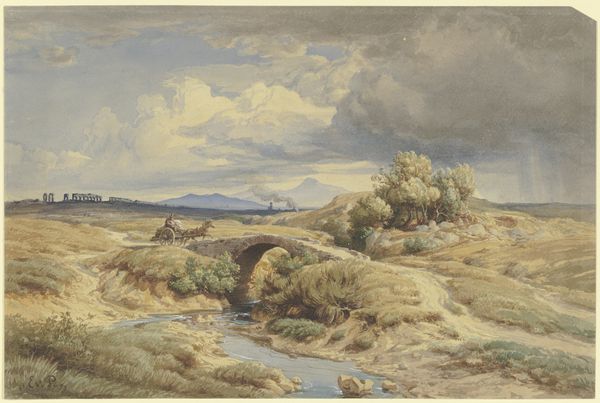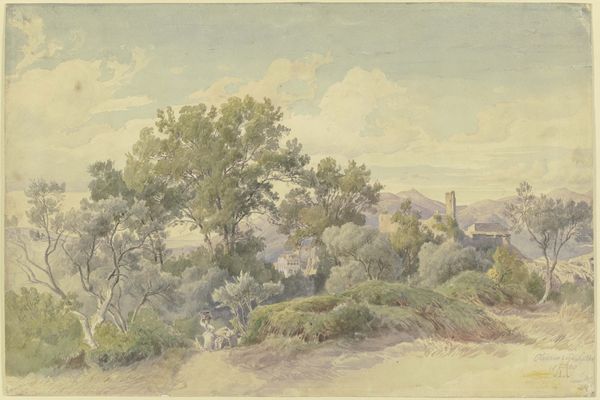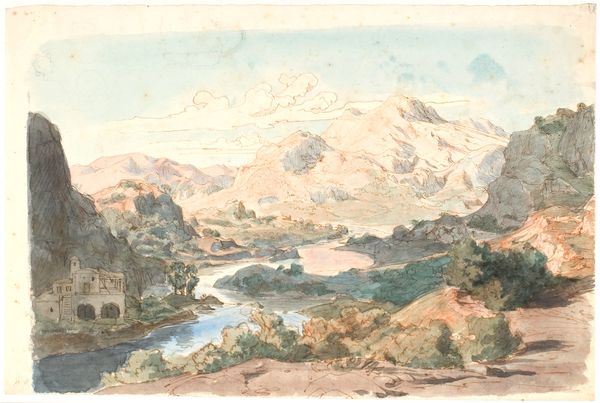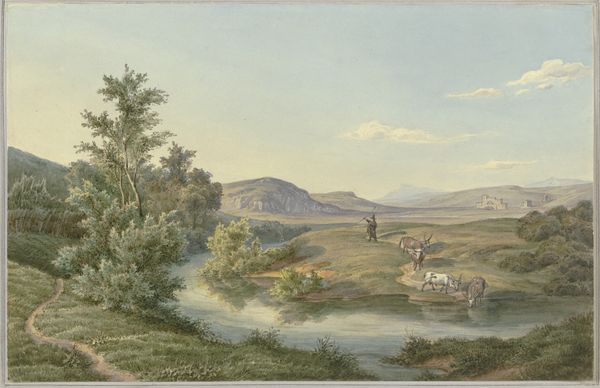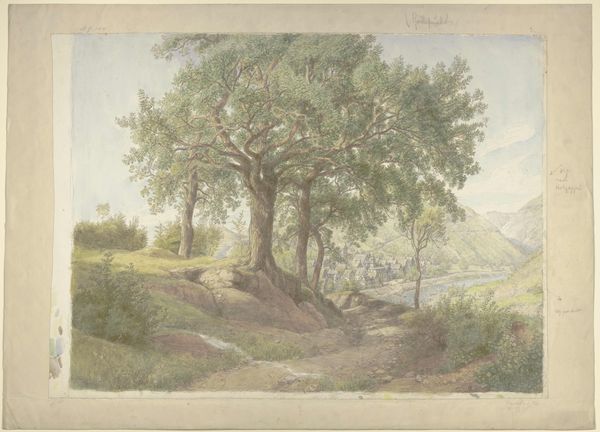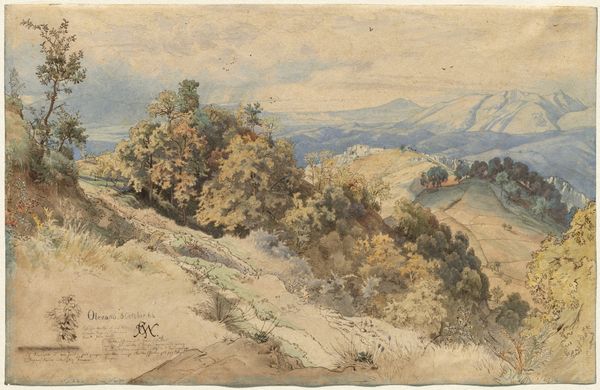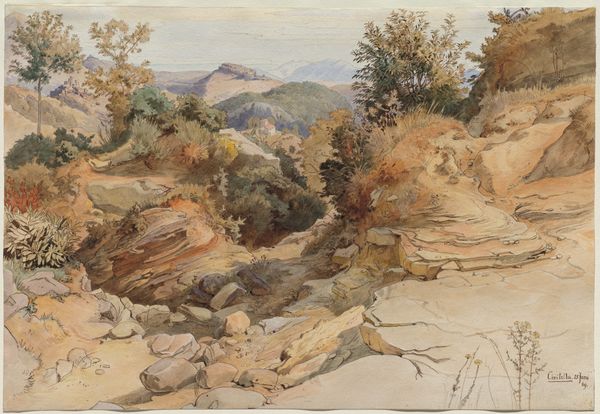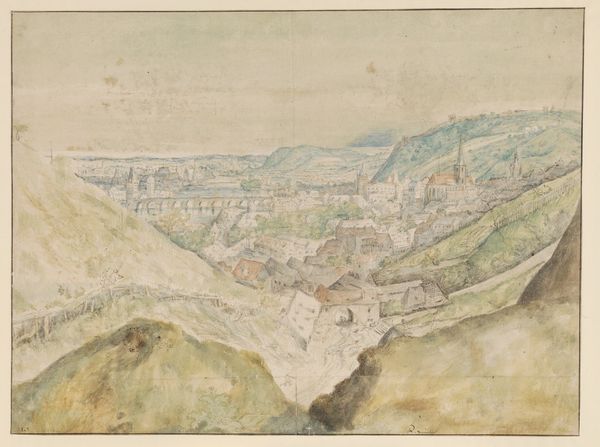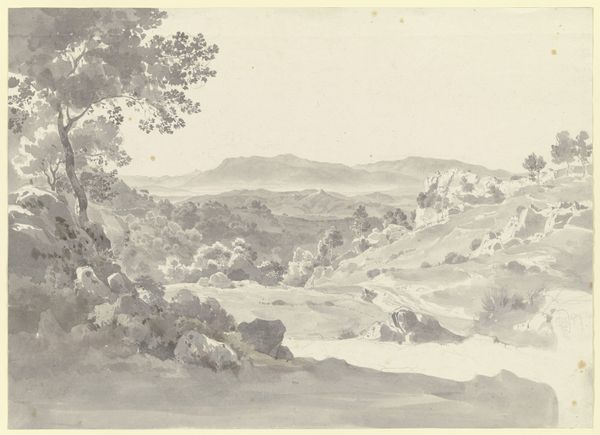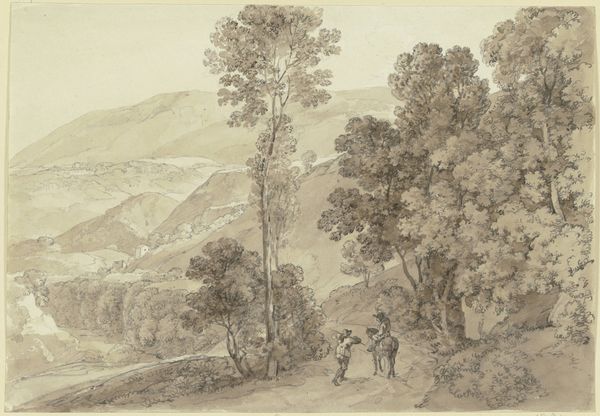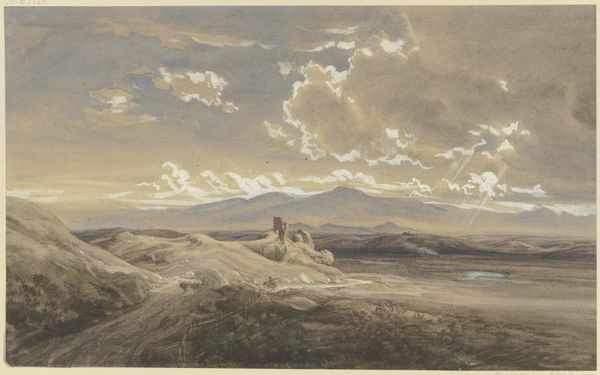
drawing, coloured-pencil, watercolor
#
drawing
#
coloured-pencil
#
16_19th-century
#
water colours
#
landscape
#
watercolor
#
coloured pencil
#
romanticism
Copyright: Public Domain
Eduard Wilhelm Pose made this watercolour, Italian Landscape, in the 19th century, during a period when the ‘grand tour’ was a rite of passage for artists. Italian landscapes held a particular fascination for northern European artists, who had idealised images of classical antiquity. In Pose’s work, the ruins of buildings and bridges dot a rolling landscape. This picturesque aesthetic was very fashionable. But why? We need to think about the institutions that facilitated the production and consumption of art. For example, the art market and the academy. We also need to consider the social and political context. In the 19th century, Italy was a fragmented country, still yearning for unification. The ruins in Pose’s landscape might be seen as a metaphor for the state of the nation. As art historians, we need to consult a wide range of sources. We can analyse how artists and artwork circulated, consider the complex relationships between artists and patrons, and how political events affected the art world.
Comments
No comments
Be the first to comment and join the conversation on the ultimate creative platform.
